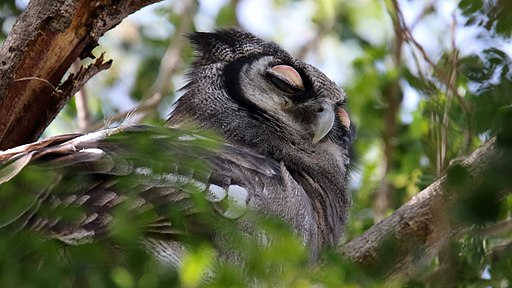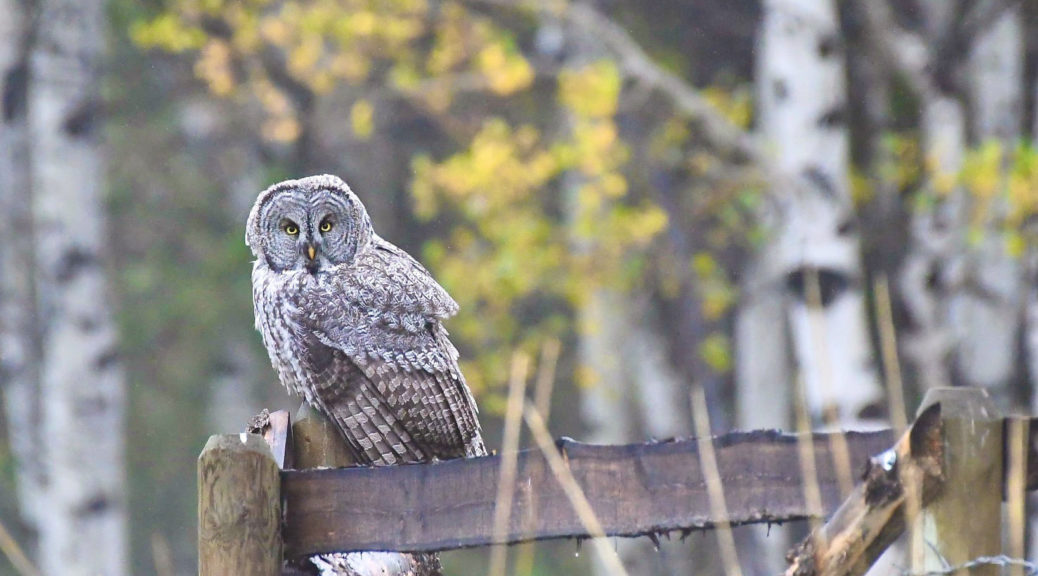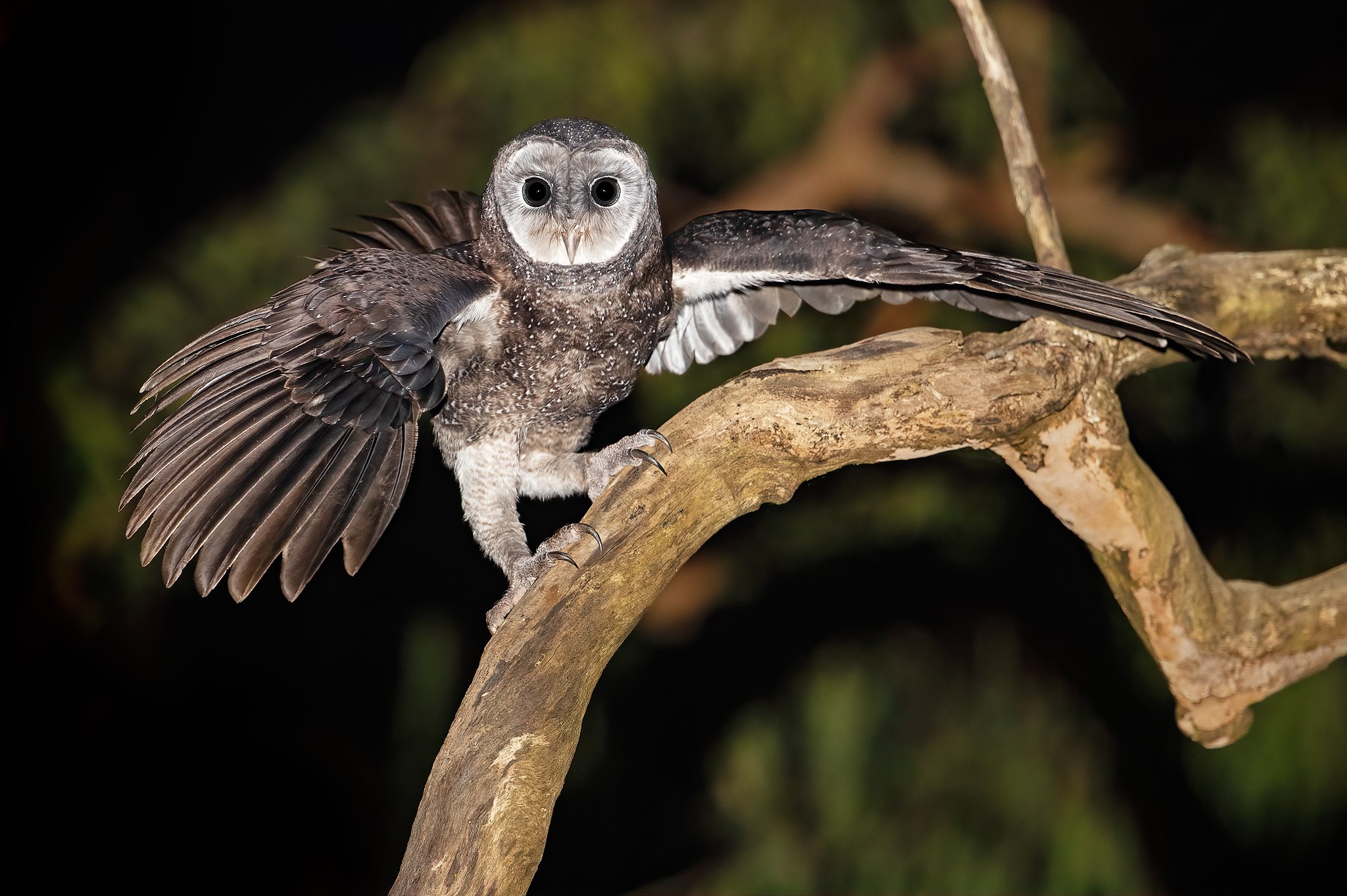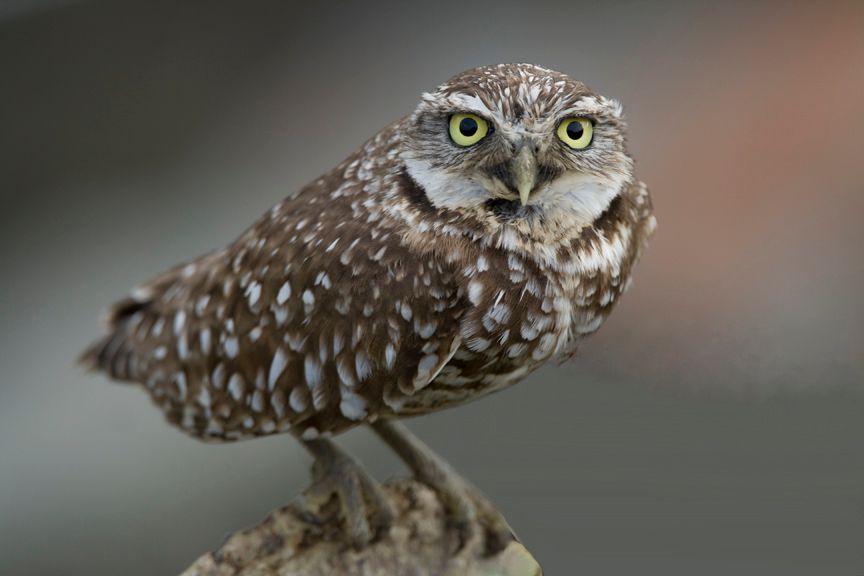Whoo Doesn’t Love an Owl?
Owling, aka owl-watching, is one of many family-based birding specialties, on par with hawk-watching, hummingbirding and kingfishering.
OK, we made up the term kingfishering, but the family Alcedinidae, the kingfishers, is another of the most beloved and “collected” in birding, and the subject of our NEXT blog.
But back to the Strigiformes and owling: the often dimly lit, (and let’s face it, frequently futile) search for nocturnal raptors whoo have captured the imagination (and cut into the sleep) of many an avid birder on vacation or birding tour.
True & Barn Owls: Strigidae & Tytonidae
Our Queensland’s Wet Tropics Tour, Aug. 13 – 23, 2023, offers chances to see both the Lesser Sooty Owl and Rufous Owl.
Owls and Owling are Everywhere!
Ranging from 5 to 28 inches in length, owls are found on every continent save Antarctica and for millennia have been inspiring myths and legends of awe, fear and admiration.
Since most owls are either nocturnal or crepuscular, an owling trip is typically launched near dusk, a shot in the dark in more ways than one. Owl unpredictability is one thing that makes owling so satisfying when we do get see them. An owl sighting always feels as though fortune has smiled.
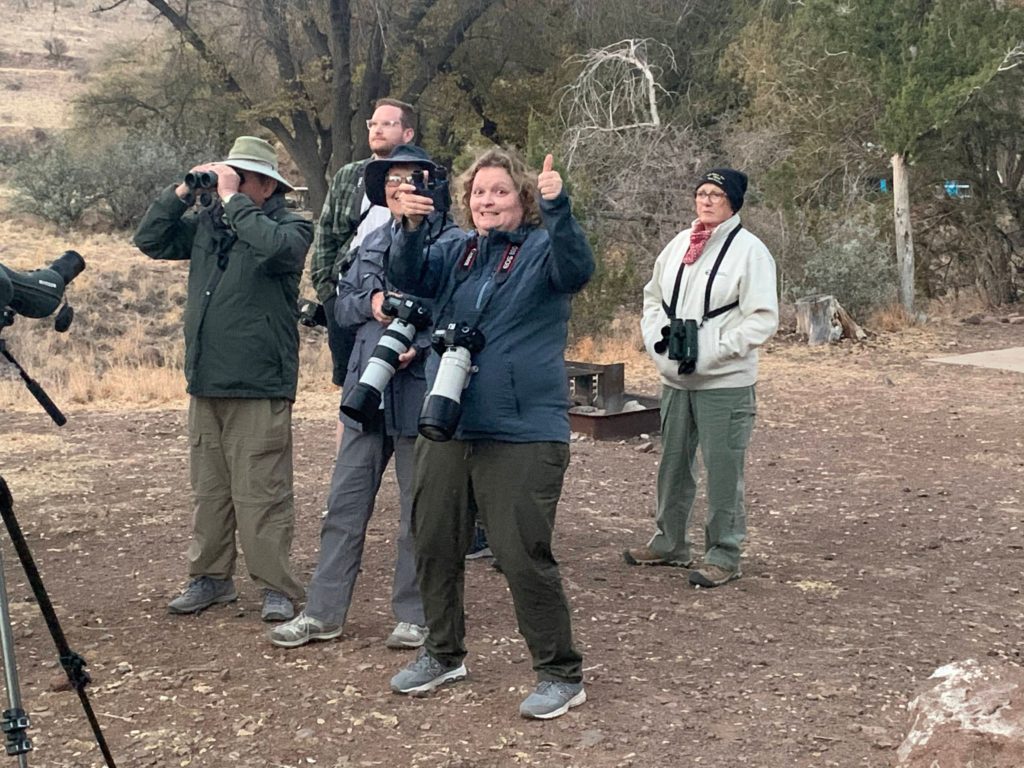
Here’s how guide Hugh Simmons narrated one Elf Owling foray in Texas’s Davis State Park:
“From recent negative reports, our chances of success didn’t seem high, but we managed to be in the right place at exactly the right time and were rewarded by brief views of two owls as they flew out from their daytime roost in a woodpecker hole in a wooden utility post – a very satisfactory end to the day!”
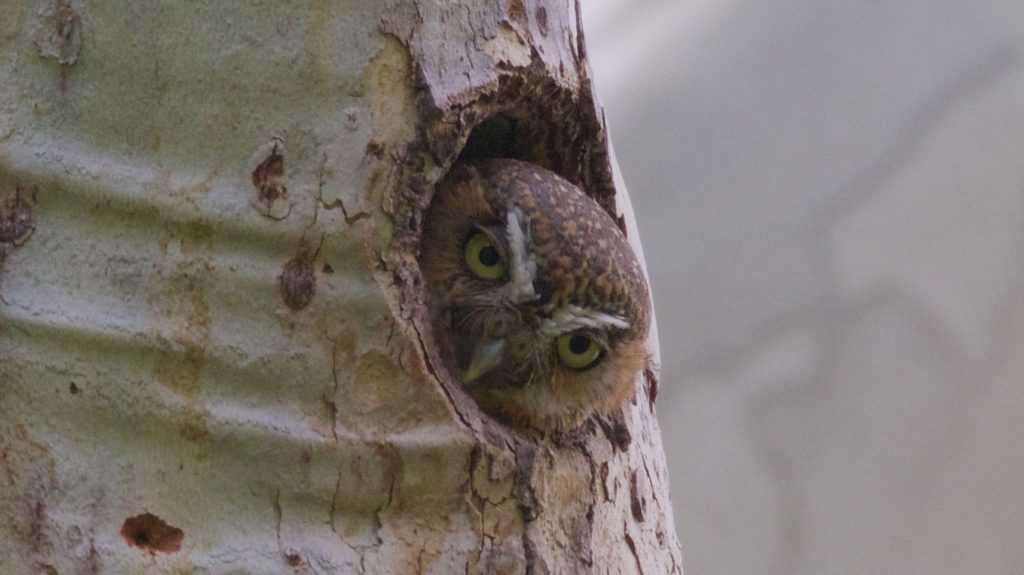
We go searching for owls on every one of the six continents they inhabit, and they are always a guest favorite when we do manage to see them. Owls often have large faces, stocky bodies and soft feathers to help muffle their predatory flights. Let’s examine some of the owl characteristics that make them special, traits that can vary widely from species to species and place to place.
Are Owls Super Smart? Or Is It Just the Big Eyes & Glasses?
While there are MANY things to love about owls, their Western reputation for being super-intelligent is probably not deserved.

So while the large, tropical Spectacled Owl we frequently see on our Belize, Mexico and Central American tours may look like it just came back from the library, as a group, owls are considered to have below average intelligence. As fierce and mighty hunters, they more closely match up with their reputations among many Native American tribes as harbingers and bringers of death. Maybe the widespread availability of Owl Cams has influenced our opinion, but reducing owls to a caricature of killing machines seems a bit harsh!
The Wise Owl Myth, Explained
Athena, the Greek goddess of wisdom, reputedly carried a Little Owl on her shoulder, which she said helped her see in the dark and into blind spots, and that association may be how owls came to symbolize wisdom.


(Fittingly, we saw Little Owl in Lesvos, Greece on our most recent tour there with guide Gerard Gorman. For your own chance to see Little Owl in its homeland of legend, our Lesvos, Greece: Migration! tour returns in April of 2023.) Photo Credit: Len Worthington via Creative Commons.
Athena’s story checks out in that owls have superior low-light vision and hearing. But if you’re looking for the smartest of birds, those are the social ones, like the corvids and parrots, according to researchers. Frequent interactions may have honed social birds’ wits and enlarged their brains. Corvids also benefit from having “long childhoods,” continuing to live with their parents “in training” for up to four years!
Owls are Loners for Life
Meanwhile, owlets are born helpless and dependent, yet not long after they fledge, just weeks or months later, begin leading solitary lives.
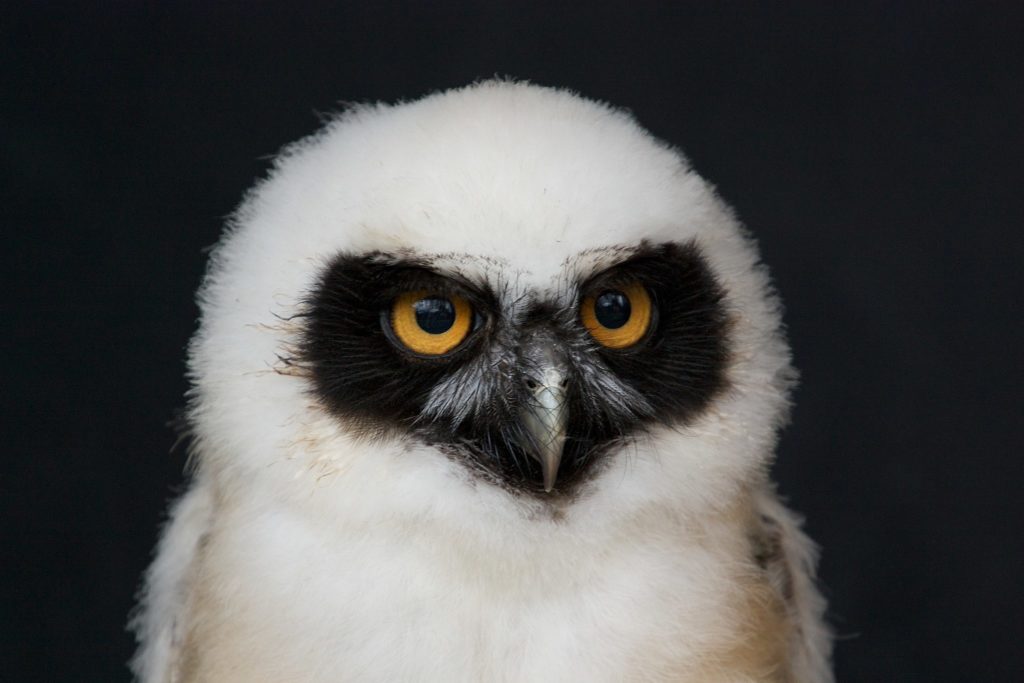
While many people know that a gathering of owls is called a ‘parliament,’ they are such a lonesome and territorial species that it’s hard to imagine when the term might ever be needed in conversation.
Owls are Hunting Machines
Specialized hunters with massive eyes and highly developed and calibrated ears, owls devote almost two-thirds of their brain’s modest volume to the tasks of seeing and hearing, notes WorldBirds.com, leaving little capacity for learning new things.
Some Owls are Smarter Than Others
Nevertheless, some species do exhibit clever and creative feeding strategies, including the Burrowing Owl, often spotted on our Texas, Arizona and Oregon’s Woodpecker Wonderland tours. They routinely set out bait for their insect prey, including bits of fresh cow pies. When a dung beetle comes by attracted by the smell of lunch, they get eaten, University of Florida researchers say.
Owl Calls: Hoots, Hisses, and Who Cooks for You?
Another ingenious adaptation of the Burrowing Owl is its ability to mimic a rattlesnake’s rattle. The Burrowing Owl exhibits this rattly hiss in states like Arizona and Texas, where it competes for burrows with rattlers, desert tortoises and rodents like kangaroo rats and ground squirrels. Rather than excavating their own homes, Burrowing Owl prefers to steal and defend a burrow, and their snake-y vocal imitations help them do that.
For a more quintessential “hooting” call, the Great Horned Owl is the go-to soundtrack for moviemakers hoping to evoke a night in the woods. Widely distributed in North and South America, we frequently see this lovely owl in Arizona and Brazil, where our next tour to the Pantanal is Oct. 11–21, 2022. There are resident Great Horned Owls at one of our favorite accommodations in the world, the Casa de San Pedro B&B, where we stay on our Southeast Arizona Sky Island Fall Sampler Nov. 3 – 10, 2022.
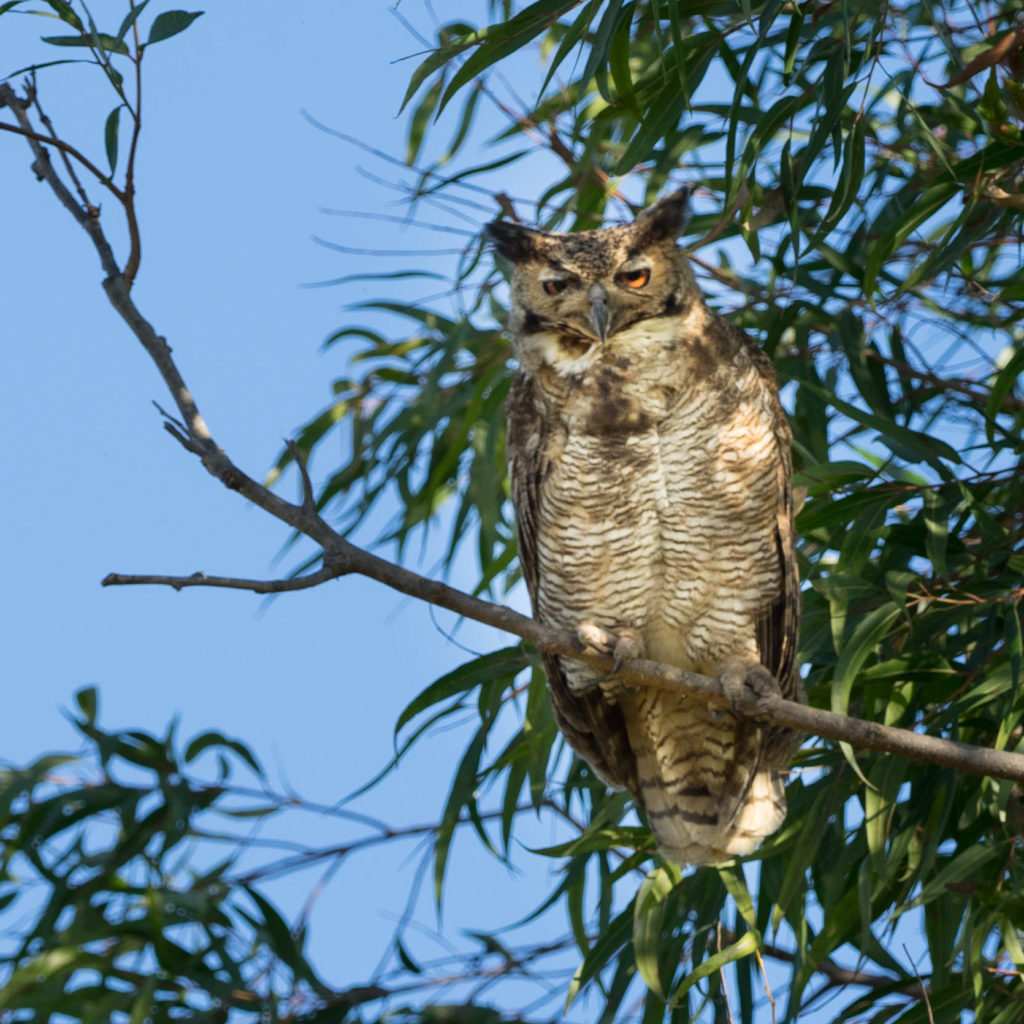
One of the most iconic and unmistakable owl calls is “who cooks for you?,” which is what the Barred Owl seems to be saying. A North American owl, we often see Barred Owl on our Oregon and Texas tours. Though they hunt at night, they are more active during the day than many other owl species.
Horned, Long-eared and Short-eared: Not Really Ears!
The feather tufts sported by the Horned, Long-Eared and Short-Eared Owl are often mistaken for ears, though they are not even in the vicinity of their true ears. These articulated tufts on the tops of owls’ heads are believed to be part signaling device, part camouflage. Scientists have observed that Short-eared Owls, which we often see on our Journey to the Galapagos cruise (next departure with space Jan. 15 – 27, 2023), tend to be found in more open areas, like grasslands and near the ocean. Longer-tufted owls, like the Long-eared Owl, which we have chances to see on our Nov. 5 – 11 California Birding and Wine tour, tend to live in forests, where a more exaggerated profile may be needed to distinguish them from denser surrounding foliage.
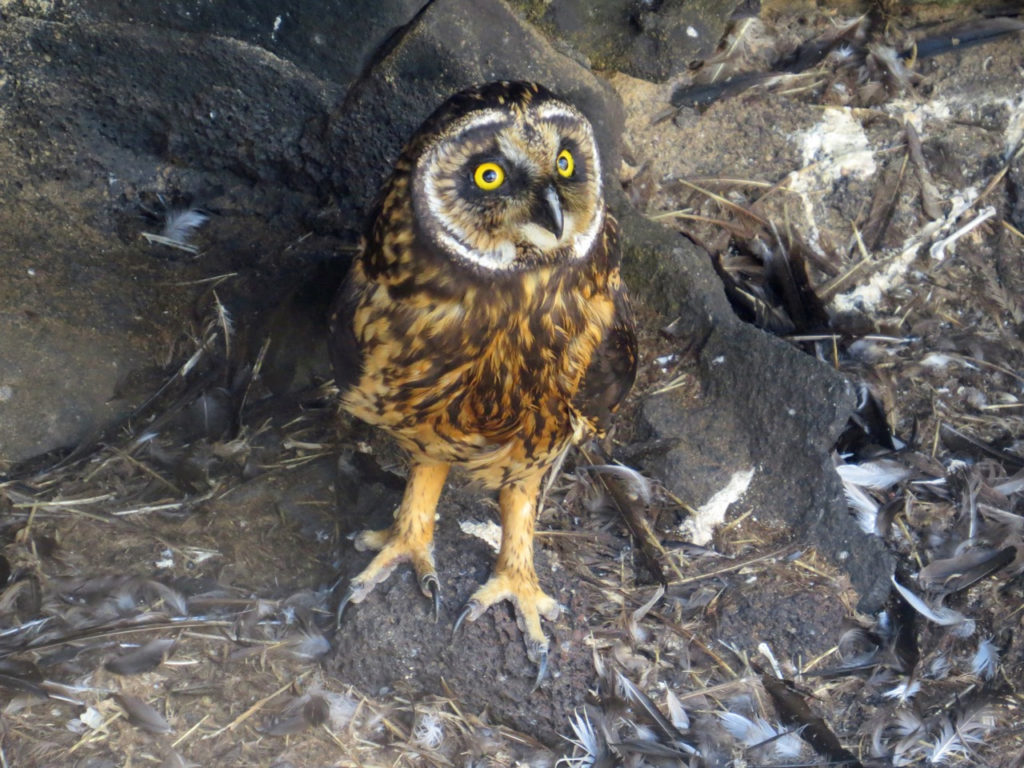
Short-eared Owl by Howard Topoff. 
Long-eared Owl by Greg Smith
Real Owl Ears are Hidden, Sometimes Offset and Always Amazing!
If someone who is observant is said to be hawkeyed, someone with keen hearing should be called owl-eared, because owls have BOTH the best low-light vision and hearing of any bird. The flat, disc-like faces are part of its hearing toolkit, directing sound to its true ears, which can be found behind the eyes and beneath their feathers. Many owls have ears that are offset, which they use to triangulate which direction a sound is coming from.
What the Color of Owl Eyes Tells Us
Besides being extremely large and cylindrically shaped so as to best capture light, owl eyes come in a variety of striking colors. The color of an owl’s eye is connected to what time of day they are hunting. The darkest of eyes denotes a night-time hunter, orange eyed-owls tend to be crepuscular —hunting at dusk or dawn — and those with yellow eyes are the diurnal, daytime owls.
To give just one example, yellow-eyed Snowy Owls are daylight hunters. Their soft white feathers provide camouflage and sound-o-flage, helping them sneak up on their prey in broad daylight. Even their feet are covered with feathers, soft slippers to help muffle the incoming threat of sharp talons. We hope to see Snowy Owl on our Alaska tours and our Washington Winter Birding tour, next departure Jan. 20 – 28, 2023.

Largest, Smallest, and Not-That-Quiet
Because they are exceptions, not only in their huge and small size, we’ve saved for last the largest and smallest owls, which share the unusual trait of being uncharacteristically noisy.
The Great Gray Owl is the longest of owl species, averaging up to 28 inches in length. Anyone who has seen this majestic owl, like our Yellowstone National Park guests often do, comes away with a sense of wonder (and some great photos, too! No telephoto needed with a bird this large.)

But the endangered Blakiston’s Fish-Owl is considered the world’s largest owl, because it us much more massive, with females weighing up to 10 pounds, and because its wingspan, which can surpass 6 feet, is the largest of any owl. We have great opportunities to see this highly range-restricted bird on our Jan 9 – 23, 2023 Japan Birding and Nature tour, along with Red-Crowed Crane and Japanese Snow Monkey. Since Blakiston’s Fish-Owl’s prey is underwater, being silent isn’t as important, which helps explain why their feathers aren’t as soft and downy as owls that hunt mammals.

At the other end of the spectrum, the smallest and arguably the cutest of all owls is the Elf Owl, which is always a treat for our guests on Texas Big Bend & Hill Country tours as well as our Southeast Arizona tours. Standing about 5 inches tall and roosting in tiny stolen cavities, the Elf Owl is very active and very noisy around dusk, when its persistent peeping offers helpful clues to bird guides trying to find them!
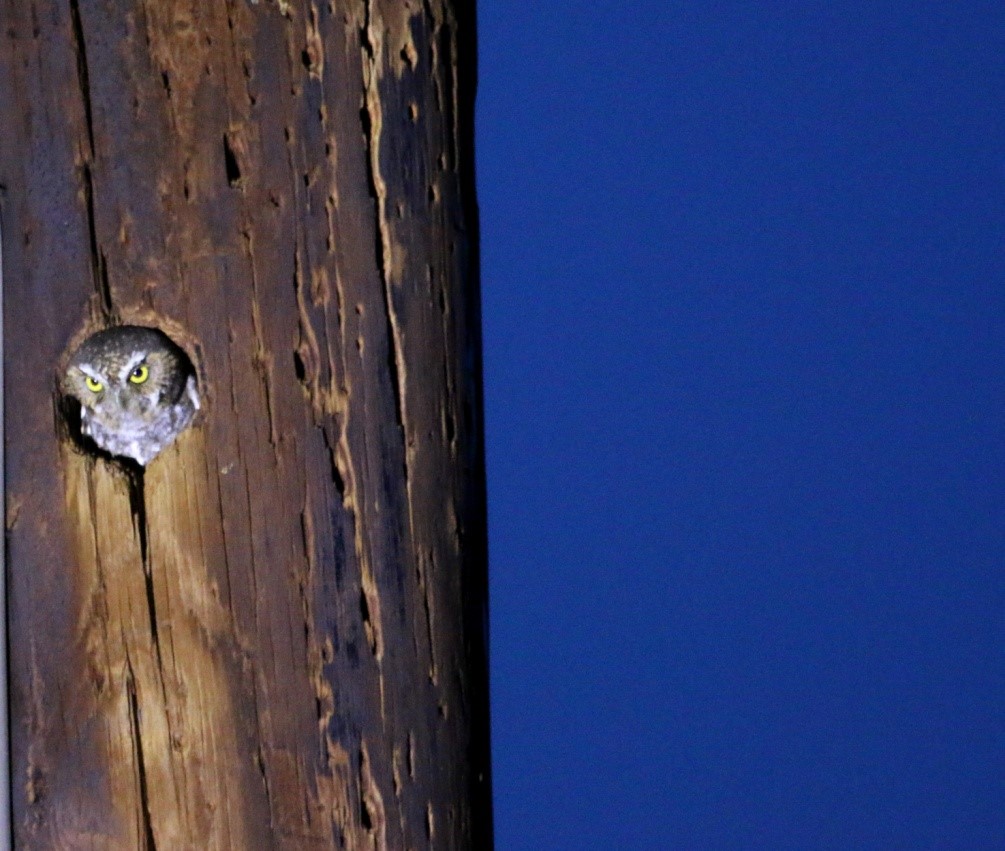
Elf Owls do have soft feathers on the leading edge of their wings, so they can be quiet when they want to. Though they are desert dwellers, they prefer riparian habitats.
Uganda and Tanzania are very Owly
We have not yet mentioned Africa, which would be a terrible oversight, because the continent has some wonderful owl species. Our Uganda and Tanzania tours in particular are great places to see owls, including Verreaux’s Eagle-Owl which can be seen on both! Our next Uganda tour with space available is Grand Uganda: Fabulous Birds and Mammals, July 15 – 31, 2023. Our next Tanzania Wildlife and Birding Safari tour is Jan. 30 – Feb. 11, 2023.
